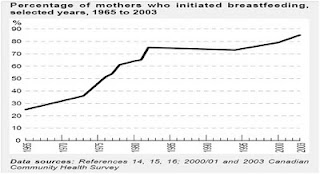Much is made of the current discussion on the determinants of health, this blog will get there too. The Lalonde report of 1974 introduced the concept of two aspects of health, the first being that of carrying for those with deficiencies in their health. The second begin about prevention health problems and promotion of good health – hence the field of health promotion had its naissance.
The second major contribution was that of “health fields” which recognized that the health care organizations was one of the things that contributed to health, and identified human biology, environment and lifestyle as other aspects.
Fast forward to 1986 with the Ottawa Charter on Health Promotion. Thank goodness the WHO still posts the document for a Google search. Good luck finding it on formal Canadian government websites (it is hidden on the PHAC website Ottawa Charter on Health Promotion ) . The fancy logo and catching phrases speak to strengthening community action, developing personal skills, creating supportive environments, reorienting health services and building healthy public policy through enabling, mediating and advocating. The basic principles have endured the years with perhaps building partnerships and collaborating as informal add-ons. In my opinion, the most important contribution is hidden after the definition of health promotion and before explaining the key words. It speaks to the fundamental conditions and resources for health, or the “pre-requisites”. Peace, shelter, education, food, income, a stable eco-system, sustainable resources, social justice and equity.
As we celebrate the 25th anniversary of the Charter, the Canadian Journal of Public Health has a special anniversary edition that is worth reading including a discussion of the impact of the document – you will not find a discussion of progress on the pre-requisites of health. ( CJPH July/August 2011 for the contents and abstracts). For peace to exist, the violent crime rate should have disappeared. The rate peaked in about 1990 in many locations, and violent crime is down about 20%. Some places like New York city have documented up to 80% reductions. All of which is good, but none of which demonstrate that we yet leave in a peaceful society.
Up to 700,000 Canadians (about 2%) are at risk for homelessness. The true number which are without shelter is not known.
13% of the Canadian working population have not completed high school, this rate is down from 29% in 1989. Only 25% of the Canadian population graduated from University.
In March 2010, 870,000 Canadians were assisted by a food bank, up nearly 20% over the previous decade.
The unemployment rate took a huge increase during the 09 recession, and has gradually fallen again to about 7.2%. While not necessarily a measure of income, it is one of the surrogate measures.
A stable ecosystem is a terminology that I have not fully understood. In the midst of climate change predictions and documented impacts of human affects, it is hard to believe that the eco-system is stable.
Sustainable resources. Remember the Club of Rome’s Limits to Growth? The book that predicted dire consequences for humanity if growth remained unchecked. An Australia has done a 30 year follow-up on those rapidly dismissed predictions and demonstrated how accurate the original work actually was. It has not received the acknowledgement that perhaps it should and is worth the read http://www.csiro.au/files/files/plje.pdf Social justice is another term that I have difficulty understanding. Moreso in the context of distingushing the constructs from that of equity that follows. There may well be issues more fundamental in measuring discrimination and intolerance. Aboriginal issues, racial issues, religious differences , language differences still fill the newspapers – what is unclear is how these issues have improved or changed since 1986 and I would welcome thoughts and comments.
Equity has perhaps had the greatest attention of any of the pre-requisites. While Canada fares better than some countries in the equitable distribution of health, it is losing ground. A topic of its own for the future.
Much has been made about the determinants of health. So little has been said about the failure to address the pre-requisites that we all need to even have a chance at health. While this piece focuses on the shortcomings in Canada, the issues of North-South gradients, developing countries and continental variation make the subtle variances in Canada seem trivial.

